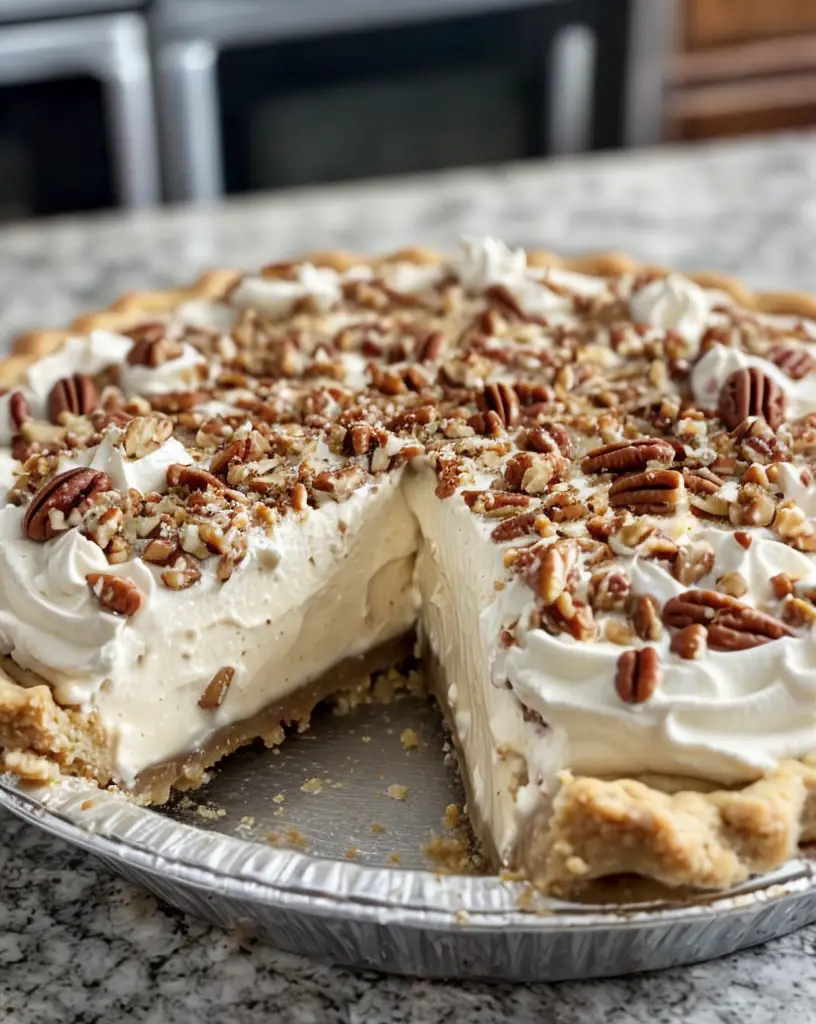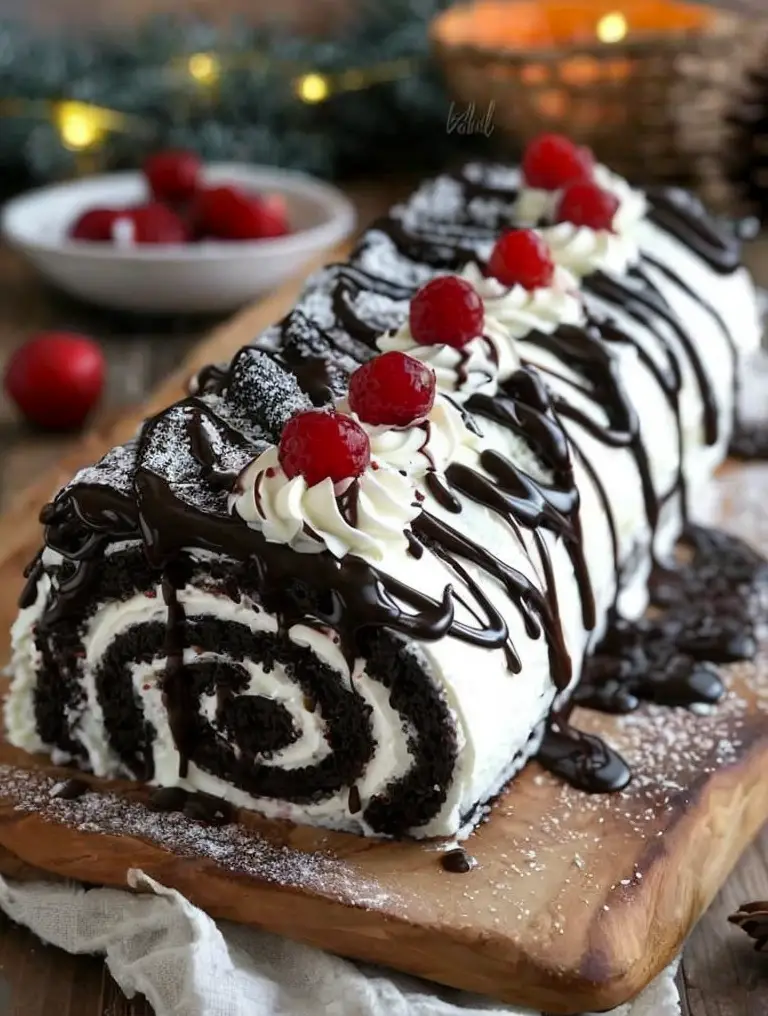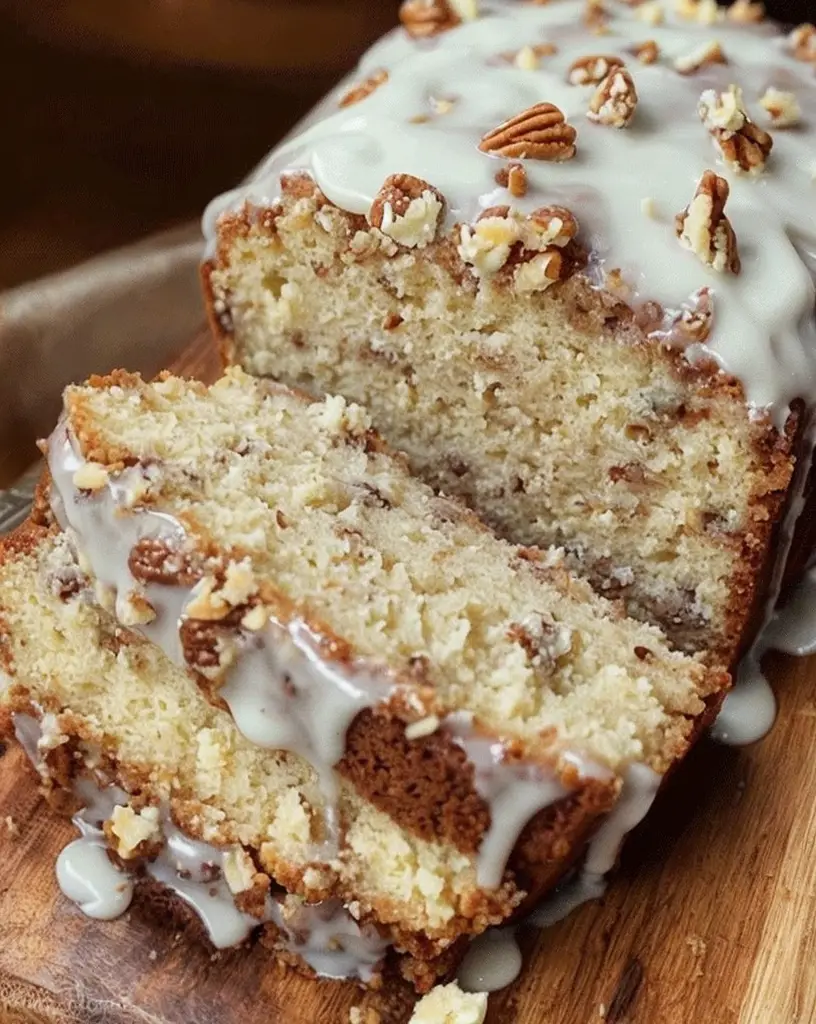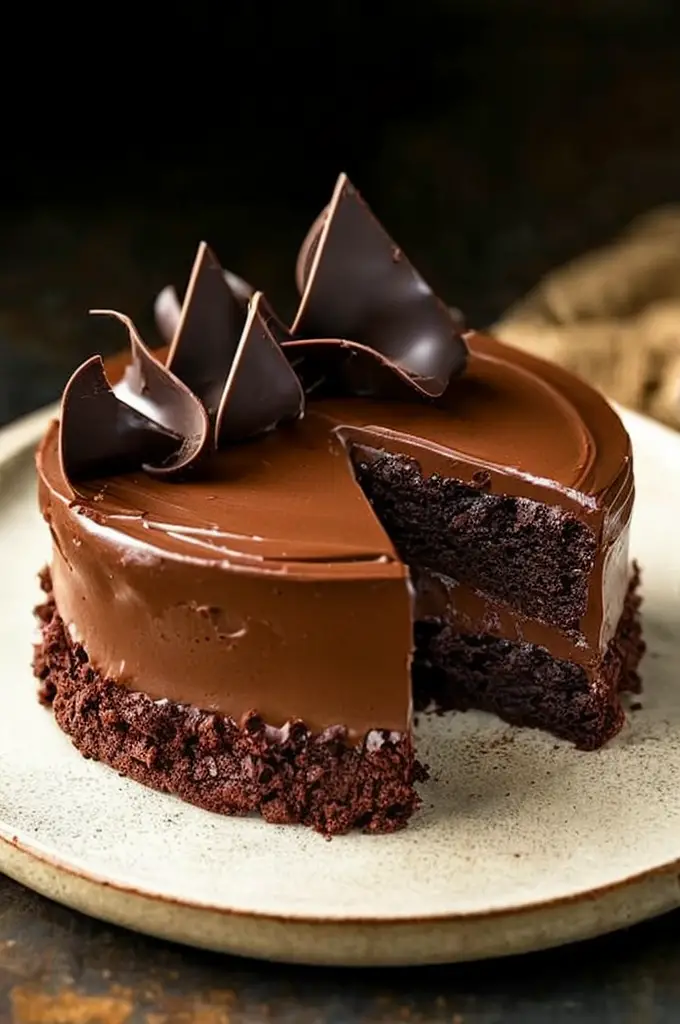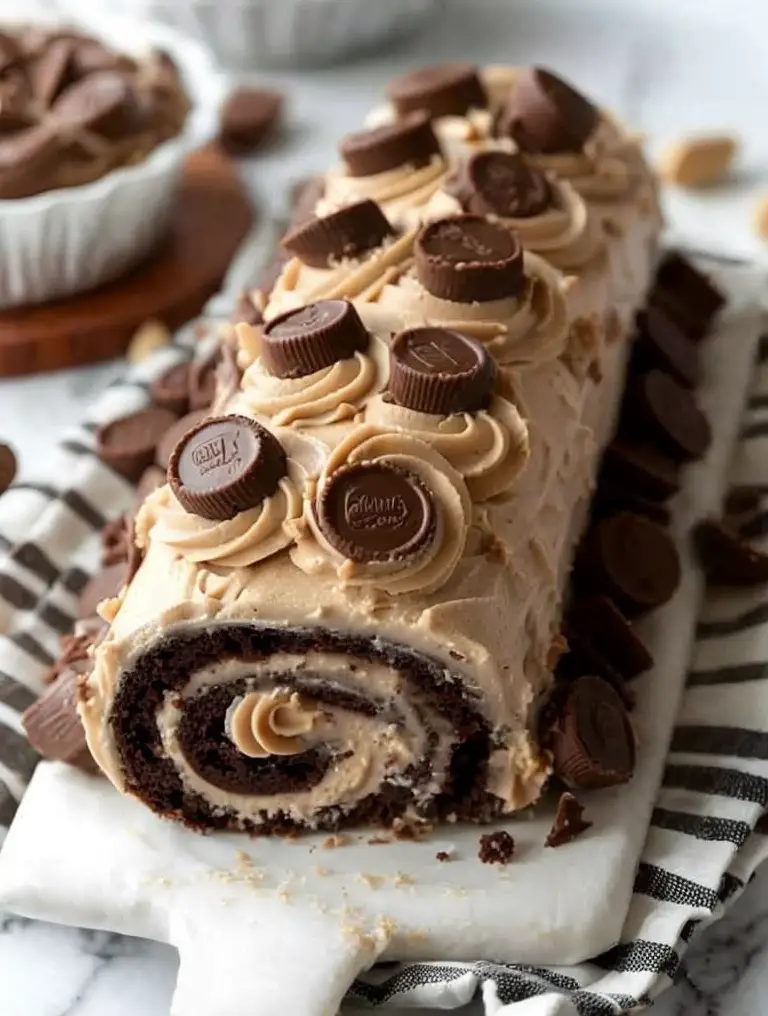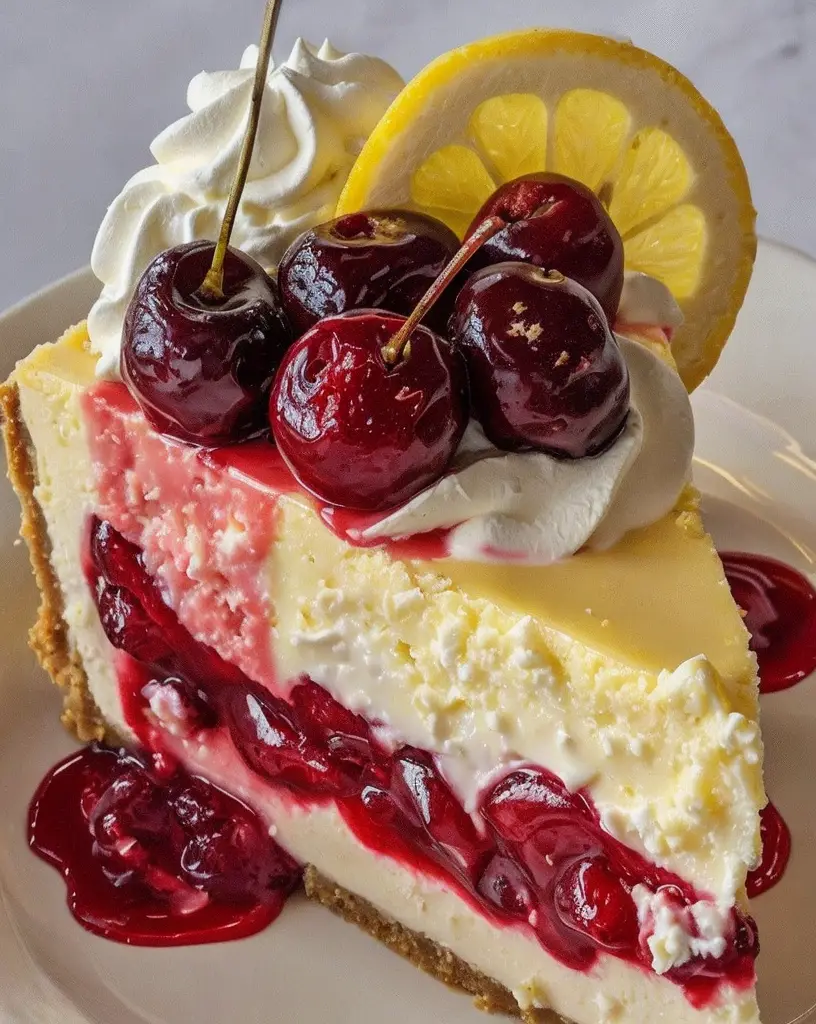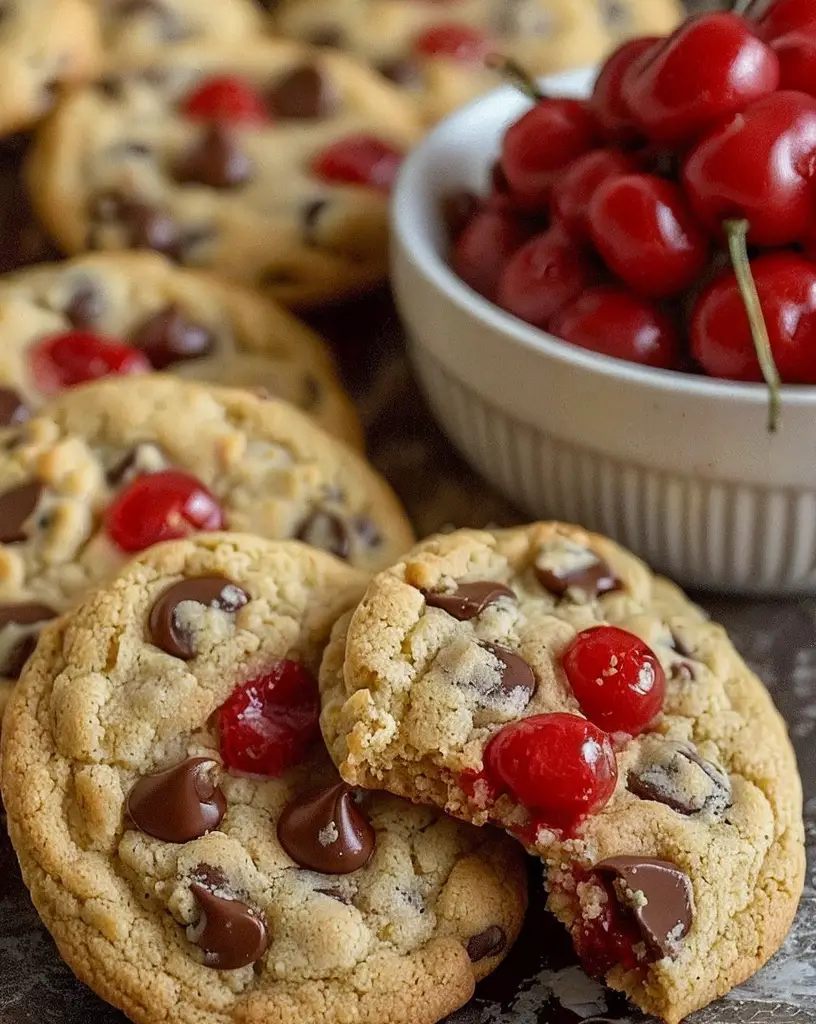Chocolate Chip Cookie Dough Ice Cream Cake: The Ultimate Summer Dessert
Chocolate Chip Cookie Dough Ice Cream Cake is the perfect treat for any dessert lover. Combining the rich, delectable taste of chocolate chip cookie dough with the refreshing coolness of ice cream, this cake is both satisfying and indulgent. The contrasting textures of creamy ice cream and crunchy cookie bits, alongside smooth chocolate ganache, offer a delightful sensory experience. Whether you’re celebrating a birthday, hosting a summer barbecue, or simply enjoying an afternoon delight, this ice cream cake will thrill your taste buds.
Quick Recipe Highlights
- Flavor Profile: Captures the classic taste of chocolate chip cookies in every bite, enhanced by the creamy goodness of vanilla ice cream. Slight hints of vanilla and butter enrich the flavor experience.
- Texture: A delightful mix of smooth ice cream with chunks of chewy cookie dough and crunchy chocolate chips, topped with a thick layer of chocolate ganache.
- Aroma: The sweet scent of vanilla and chocolate greet your senses with each slice, creating an irresistible allure.
- Visual Appeal: Layers of rich color contrast beautifully—the golden hue of cookie dough set against a creamy white layer of ice cream and dark chocolate topping.
- Skill Level Needed: Requires basic assembly skills, but patience for freezing times is essential.
- Special Equipment: Springform pan, mixer, and offset spatula for smooth layering.
Recipe Overview
- Difficulty Level: Intermediate. While the steps are straightforward, precision in layering and patience during freezing stages are key.
- Category: Dessert. This sweet indulgence fits perfectly as a post-meal treat or celebration centerpiece.
- Cuisine: A fusion of American classics—ice cream cake and chocolate chip cookie dough.
- Cost: Moderate. Ingredients are readily available but buying quality ice cream and chocolate adds comfort to the dessert.
- Season: Best enjoyed in warm weather months, especially spring and summer when cool, refreshing desserts are in demand.
- Occasion: Perfect for birthdays, family gatherings, or any festive occasion where you want to impress with a homemade dessert.
Why You’ll Love This Recipe
If you’re wondering why this Chocolate Chip Cookie Dough Ice Cream Cake deserves a place on your dessert table, consider the rich culinary experience it offers. The taste is a heavenly combination of two beloved treats: the buttery crunch of chocolate chip cookies and the smooth richness of ice cream. The texture varies with each bite, offering a satisfying crunch, a chewy contrast from the cookie dough, and the creaminess of ice cream.
Preparation is a breeze thanks to a straightforward assembly process. While it requires patience with freezing times, the actual hands-on work is minimal, making it a convenient choice for those who love homemade desserts without a time-consuming ordeal. Nutritional advantages may not be its primary selling point, given its indulgent nature, but knowing that all ingredients are handpicked ensures no hidden preservatives.
This dessert is a social icebreaker—perfect for parties, it sparks conversation and evokes nostalgia for simpler, fun times. Sharing a slice means sharing a memory. Moreover, it’s a cost-effective choice when considering the serving size—providing ample portions without an extravagant budget. The ingredients are accessible, ensuring anyone with basic grocery access can recreate this masterpiece.
Historical Background and Cultural Significance
The origin of ice cream cake can be traced back to the Victorian era, when “Bombes” were fashionable—moulded mixtures of ice cream and fruit. Over the years, these transformed into the layered aesthetic we know today. The combination with cookie dough is a modern twist, paying homage to classic American desserts while delivering a novel culinary experience.
Chocolate chip cookies, invented in the 1930s by Ruth Wakefield, have become a cornerstone of American dessert culture. The inclusion of cookie dough in desserts is more recent, emerging from a trend of adding indulgent, raw components to elevate simple sweets. Regional variations sometimes incorporate other cookie types or even brownie bases to diversify the texture.
Evolution in the ice cream industry, introducing numerous flavors and textures, has allowed for such creative cakes to develop. Modern interpretations readily incorporate cultural preferences, pushing the boundaries of the traditional cake.
Ingredient Deep Dive
The star of this dessert—the chocolate chip cookie dough—is as rich in history as it is in flavor. Embedded in American culture, it offers a comforting, nostalgic flavor profile loved by all ages. Nutritionally, whole ingredients like butter and eggs offer richness, though indulgence should be mindful.
Vanilla ice cream provides the creamy base and complements the cookie’s sweetness with its subtle flavor. Opt for high-quality brands or homemade for the best results. Storage is key—keep your ice cream at a stable, cold temperature to maintain consistency and avoid ice crystals.
Dark chocolate for the ganache should be rich yet balanced in bitterness. A good quality chocolate enhances the entire cake’s taste profile without overpowering it. Look for even color and a lack of bloom on the chocolate surface when purchasing.
Common Mistakes to Avoid
- Rushing the freezing process. Allow sufficient time for the ice cream to set for defined layers.
- Using low-quality chocolate, which can affect the entire flavor balance.
- Overmixing cookie dough, leading to tough cookies instead of the desired chewy texture.
- Skipping the use of parchment paper in the pan. This ensures a smooth release of the cake.
- Underestimating the need for a well-set ganache to avoid a runny mess.
- Freezing ice cream too hard, making it difficult to spread. Allow it to soften slightly before use.
- Using a dull knife to cut the cake leads to squishing rather than slicing cleanly.
- Neglecting to properly clean tools in-between to prevent flavor contamination.
- Failing to level the cake during assembly, causing an unsteady final product.
Essential Techniques
The art of layering an impeccable dessert like this lies in precision. Start by softening ice cream to outfit layers without melting—this ensures smooth spreadability and neat edges. Master the ganache by using a double boiler for even melting, resulting in a glossy, pourable consistency.
Freezing the cake with intervals allows each layer to set, preventing mishaps in structure when cutting. Each layer should freeze solid before the next is introduced, preserving the distinctness of each component. Opt for a sharp, warm knife for even slicing and to prevent the layers from merging due to pressure.
Pro Tips for Perfect Chocolate Chip Cookie Dough Ice Cream Cake
To achieve the ultimate texture, mix your cookie dough just long enough to combine ingredients. Overmixing can result in texture changes. For the ganache, allow it to cool before pouring over the ice cream to prevent melting or breaking the surface.
Line your pan with parchment paper to facilitate smooth removal and to maintain the cake’s shape. When smoothing ice cream layers, dip your spatula in hot water to prevent sticking.
If time allows, let the cake thaw slightly before serving to enhance its flavor profile and soften the texture for the perfect bite. Avoid using pre-packed cookie dough; homemade dough offers the best taste and authenticity.
Variations and Adaptations
Regional variations can be achieved using local cookie types, such as shortbread in Scottish-inspired versions. For seasonal adaptations, consider incorporating fruit compotes or syrups for freshness.
For those with dietary restrictions, consider using gluten-free oat flour for the cookie dough or dairy-free ice creams available in the market. Vegan alternatives can be made using coconut milk-based ice creams and eggless cookie dough recipes to cater to plant-based diets.
Likewise, switch up flavors with different ice cream bases like strawberry or mint for contrast, or add nuts and fudge for added texture. Adding edible flowers or colorful sprinkles can transform it visually, making it perfect for themed gatherings.
Serving and Presentation Guide
An ideal serving approach involves slicing the cake using a warm knife for seamless pieces. Layer each slice on a chilled dessert plate to maintain its structure. Consider garnishing with fresh mint or a drizzle of chocolate syrup.
Classical accompaniments such as a dollop of whipped cream enhance the richness and offer a modern twist. Ensure portions are balanced; aim for approximately an inch-thick slice per serving to ensure even distribution of each element.
Wine and Beverage Pairing
Pairing this dessert with a late-harvest Riesling or a rich port wine enhances its sweetness while balancing with a hint of acidity. For non-alcoholic options, consider a cold-brewed chai tea with its spices to contrast the sweetness.
Coffee complements the richness, so an espresso or latte works well, providing a new dimension to the dessert without dominating its flavors. It’s best served slightly colder than room temperature to allow the flavors to unfold greatest impact.
Storage and Shelf Life
Preserve the freshness of your chocolate chip cookie dough ice cream cake by storing it in a tightly sealed container in the freezer. Ensure it’s wrapped to minimize exposure to air, which can cause freezer burn.
Store at a stable, cold temperature to maintain the cake’s integrity. Signs of spoilage include a crunchy, icy texture or a muted taste profile. For optimal enjoyment, allow a brief period of thawing before serving.
Make Ahead Strategies
Advance preparation involves creating cookie dough and ice cream layers ahead, storing them separately in airtight containers. Assemble the cake when ready, ensuring each layer is well-frozen for optimal results.
Strategically freeze between layers for ease and precision, resulting in an even, visually appealing dessert. Incorporate fresh elements like whipped cream only before serving to maintain their vibrancy.
Scaling Instructions
To halve the recipe, adjust ingredients proportionately, keeping scaling in mind for cooking times and equipment size. For larger gatherings, doubling is convenient if space and tools allow.
Equipment adjustments, such as larger pans, as well as timing extensions for freezing should be considered with increased quantities. Larger batches may require deeper freezes to maintain structure during transportation or when set out over time.
Nutritional Deep Dive
This indulgent dessert is high in carbohydrates and fats, with nutrients depending heavily on ingredient quality. Using high-fat ice cream provides more richness, alongside added benefits from real dairy over alternatives.
Portion control is crucial due to calorie density, making it perfect as an occasional treat rather than a staple. Adjust flavors and textures for a macro-focused diet by incorporating nuts or seeds for added protein.
Dietary Adaptations
To adapt for gluten-free diets, substitute oat or almond flour into the cookie dough recipe. Use dairy-free ice cream variants for lactose intolerance, or create vegan modifications with plant-based alternatives like coconut milk.
Lower carbohydrate versions might include using sugar-free sweeteners and keto-friendly flours such as almond or coconut. For a paleo adaptation, all-natural ingredients such as coconut flour and honey provide a wholesome alternative.
Troubleshooting Guide
Encountered textural issues? Ensure all cookie dough elements are properly chilled, preventing melting or bleeding colors in layers. Flavor balance is achievable with a careful mix of quality chocolate and premium vanilla.
Freezing technique challenges can be mitigated by using modern chilling solutions with even temperatures, such as blast chillers. Ingredient substitutions should maintain quality and a similar texture, ensuring recipe balance remains ideal.
Timing concerns often stem from impatience during freezing phases. Follow each step diligently to maintain recipe integrity and achieve the desired final result.
Recipe Success Stories
Feedback from our community emphasizes the delight of combining childhood favorites into one dessert. Successful reader adaptations include adding caramel swirls or altering the flavors with espresso powder for a mocha twist.
Unique presentations shared feature themes and decorations ranging from festive to formal, showcasing the cake’s versatility. Culinary photographers offer tips to highlight beautiful layers—reflection pieces on the ganache, complimentary tableware, and lighting setups accentuating the creaminess.
Frequently Asked Questions
- Can I use store-bought cookie dough?
- Is there a way to make this cake without a springform pan?
- Can this cake be made in advance and frozen for longer periods?
- How do I prevent the ice cream from melting during assembly?
Yes, store-bought dough can be a time-saving alternative, but homemade dough allows for better control over ingredients and taste nuances.
You can use an aluminum baking pan lined with parchment paper for similar results, though achieving the same level of neatness may be more challenging.
Absolutely. Properly wrapped, this cake can last in the freezer for several weeks, although the freshest flavors are achieved when consumed within the first few days.
Assembling in stages within a chilled environment and working quickly with softened, but not melted, ice cream can mitigate melting risks.
Additional Resources
Explore more with related recipes that push the texture boundaries, inspiration through culinary technique guides, or delve deeper into flavor science for personalized dessert creation. Discover high-quality equipment that enhances your culinary journey or advice on seasonal product selection for year-round perfection.
Join the Conversation
Engage with our warm community through social media channels, sharing your photographic renditions of this dessert. Participate in discussions, offering feedback or personal tweaks while staying informed about flavor trends and executing thematic dinner parties revolving around this crowd favorite.
The Recipe
Chocolate Chip Cookie Dough Ice Cream Cake
Serves: 10
Prep Time: 20 mins
Cook Time: 0 mins
Total Time: 240 mins
Kitchen Equipment Needed
- Springform pan
- Mixer
- Offset spatula
- Parchment paper
Ingredients
- 1 cup all-purpose flour
- ½ teaspoon baking soda
- ½ teaspoon salt
- ½ cup unsalted butter, softened
- ½ cup packed brown sugar
- ¼ cup granulated sugar
- 1 teaspoon vanilla extract
- 1 cup chocolate chips
- 2 quarts vanilla ice cream
- 1 cup heavy cream
- 1 cup dark chocolate chips for ganache
Directions
- Prepare the cookie dough: Mix butter, sugars, and vanilla in a bowl. Add flour, baking soda, and salt, mixing until combined. Stir in chocolate chips.
- Press dough into the lined springform pan, creating an even base. Freeze for 30 minutes.
- Spread softened vanilla ice cream over the dough evenly; freeze until solid.
- For the ganache: Heat cream until simmering. Pour over chocolate chips and whisk until smooth. Cool slightly before spreading evenly over the frozen ice cream layer.
- Freeze cake for at least 3 hours or overnight. Serve with optional toppings as desired.
Recipe Notes
- Substitute semi-sweet chocolate for dark ganache for a lighter taste.
- Add nuts to the cookie dough for additional texture.
- Ensure ice cream is slightly softened for smooth spreading.

